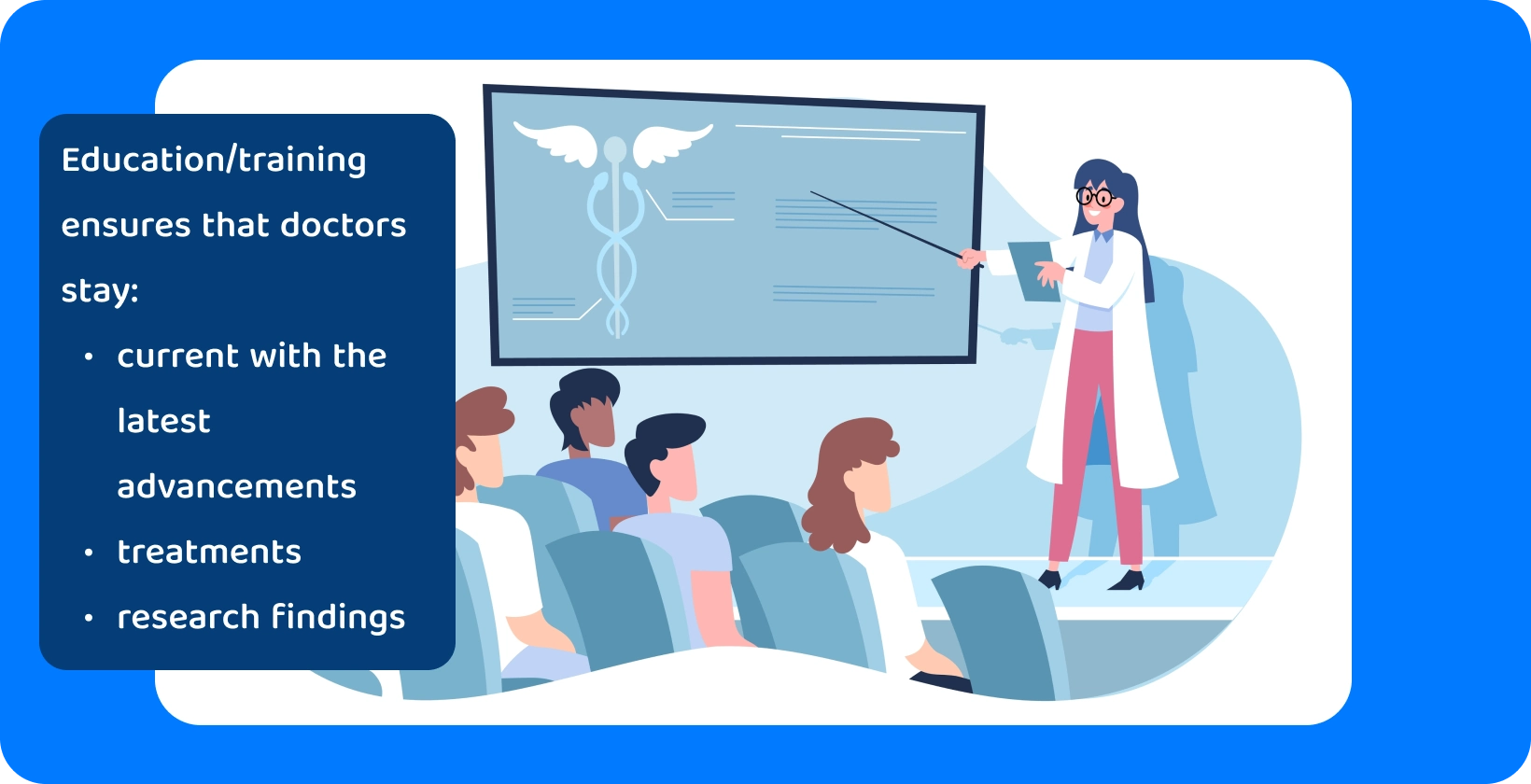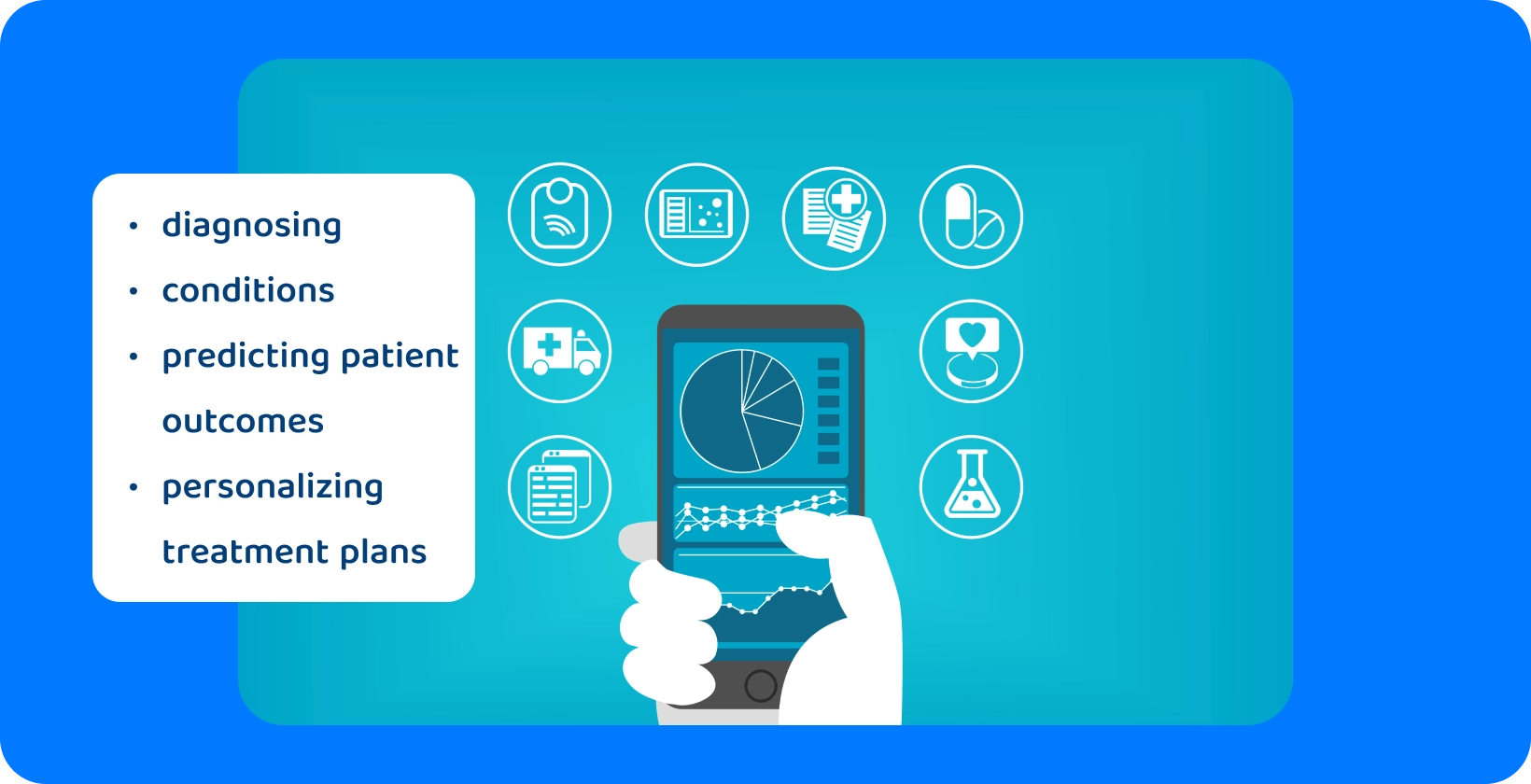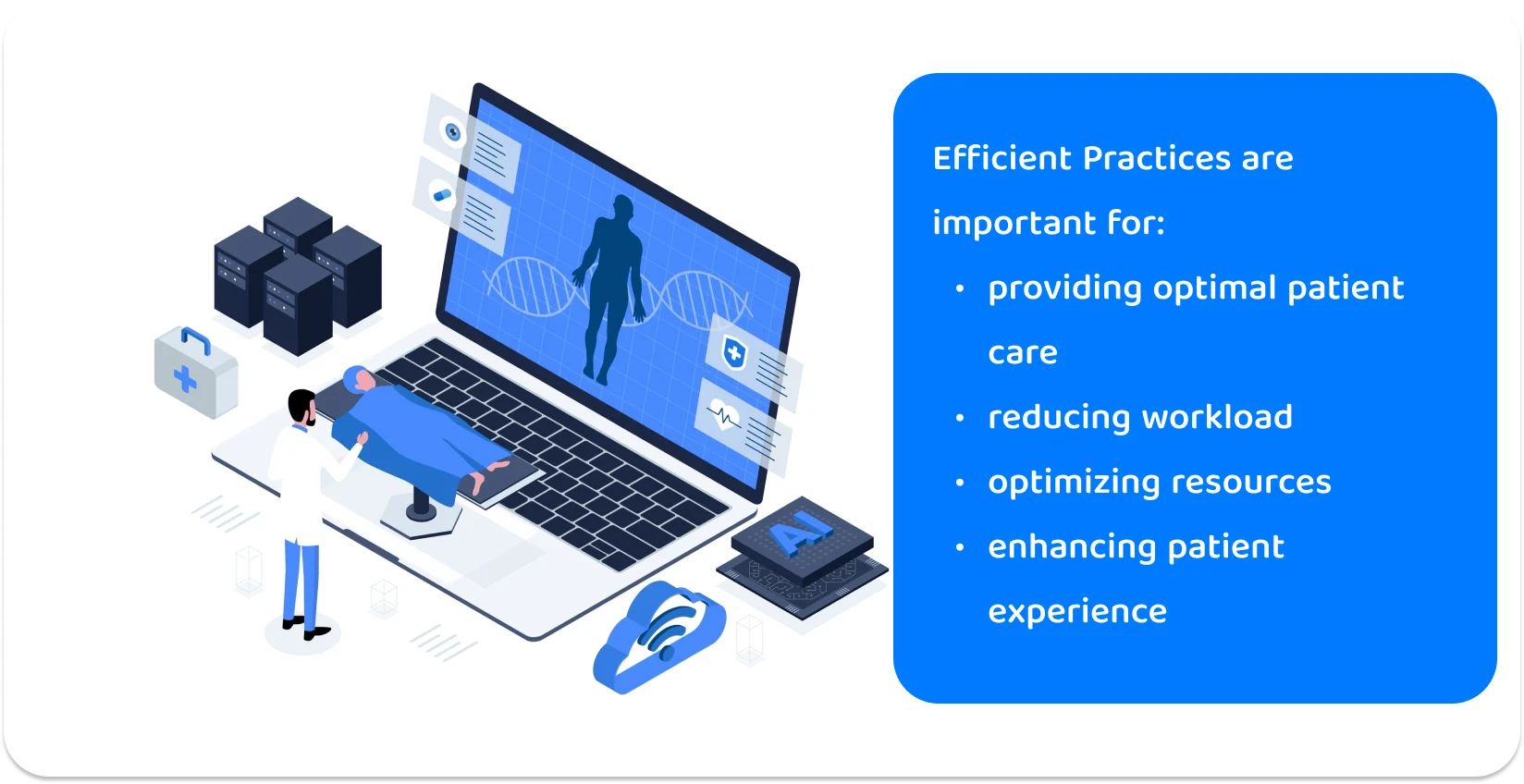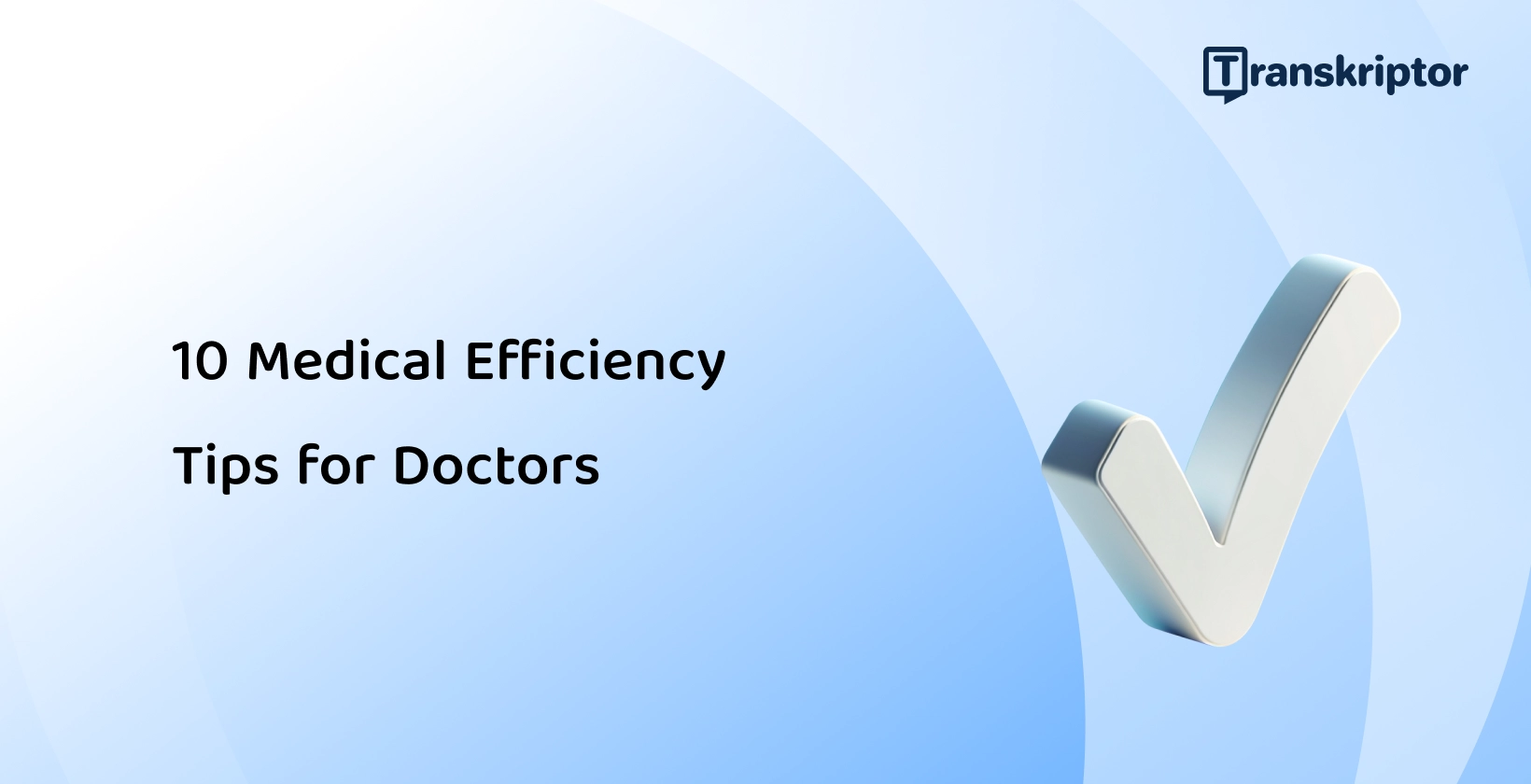Achieving success in the challenging world of medicine is ensured by medical efficiency, which also provides better patient care. Doctors are able to prioritize tasks efficiently and optimize communication with their patients by using medical efficiency tips. Incorporating ongoing education and adopting new technologies are pivotal for staying current and boosting efficiency.
Among these technologies, Transkriptor stands out by offering a practical solution for managing documentation and administrative tasks. By automating the transcription of patient interactions, Transkriptor frees up valuable time for doctors, allowing them to focus more on patient care and less on paperwork.
The top 10 medical efficiency tips for doctors are listed below.
- Prioritize Tasks: Doctors manage their workload efficiently by prioritizing tasks.
- Optimize Patient-Doctor Communication: Doctors enhance patient satisfaction by optimizing their communication with patients.
- Implement Medical Time-Saving Strategies: It allows doctors to allocate more time to patient care.
- Enhance Medical Team Collaboration: Collaboration among colleagues is crucial for comprehensive patient care.
- Continuous Medical Education and Training: Doctors have to commit to ongoing education to stay current with medical advancements.
- Stay Updated with Medical Knowledge: Doctors should stay updated with medical literature and research.
- Improve Self-Care and Stress Management: Includes maintaining a work-life balance for the mental well-being of doctors.
- Evaluate and Incorporate Patient Feedback: Patient feedback is valuable for improving healthcare services.
- Implement Standardized Care Pathways: Doctors use care pathways to deliver consistent and high-quality care.
- Utilize Technology for Streamlined Medical Practice: Technology improves practice efficiency and enhances patient data management.
1. Prioritize Tasks
Doctors have a multitude of tasks to handle in a limited time. Doctors focus on the most critical and time-sensitive tasks first by prioritizing their tasks. It reduces delays in diagnosis and treatment.
Prioritization helps doctors make informed decisions about patient care. Doctors allocate their time and resources to patients with the greatest need by identifying which tasks are most important.
Effective task prioritization reduces the feeling of being overwhelmed and helps doctors maintain control over their workload. The task prioritization minimizes the risk of burnout and improves overall job satisfaction. It ensures that doctors allocate time to address patient concerns and this leads to a better patient experience.
Prioritization helps doctors manage risks effectively. Critical tasks are given top priority and this reduces the likelihood of medical errors or delays in treatment. Prioritization allows doctors to adapt to unexpected situations or emergencies more effectively. Doctors quickly shift their focus to address urgent cases without disrupting the overall workflow when their priorities are clear.
2. Optimize Patient-Doctor Communication
Clear and open communication with patients helps doctors gather accurate and comprehensive medical information. Effective patient-doctor communication facilitates more precise diagnoses and reduces the need for additional tests or consultations. It ensures that patients understand their conditions and treatment plans.
Doctors conduct consultations more efficiently with patient-doctor communication optimization. Doctors, thus, quickly grasp patient concerns and ask relevant questions. Effective communication prevents misunderstandings, which allows doctors to collaborate with patients. Doctors discuss treatment options, risks, and benefits together with the patients.
Incorporating Transkriptor into the medical documentation process can significantly aid this communication. Transkriptor's advanced transcription capabilities allow for the accurate conversion of consultation recordings into text. This process ensures that every detail of the patient-doctor interaction is captured, facilitating better understanding and review of patient concerns, treatment discussions, and any agreed-upon medical procedures.
Moreover, Transkriptor helps in creating a comprehensive medical record that can be easily accessed and reviewed, ensuring that nothing is missed or forgotten.
3. Implement Medical Time-Saving Strategies
Time-saving strategies help doctors see more patients without compromising the care quality. Efficient patient intake processes, standardized protocols, and streamlined clinical workflows help develop time-saving strategies. Time-saving strategies aim to eliminate redundant or unnecessary tasks.
Implementing time-saving strategies reduces administrative workload and allows doctors to focus more on patient care. Time-saving strategies include using electronic health records (EHRs) and dictation software .
Establishing standardized care pathways and treatment protocols saves time by reducing variability in clinical practices. Doctors follow evidence-based guidelines for specific conditions, streamlining decision-making, and treatment planning.
Efficient communication among healthcare providers saves time and prevents misunderstandings. The use of secure messaging systems and collaborative platforms facilitates rapid information exchange.
4. Enhance Medical Team Collaboration
Effective team collaboration allows doctors to allocate resources efficiently. Doctors ensure that tasks are done appropriately by coordinating with nurses, medical assistants, and other healthcare professionals. The coordination minimizes waste and maximizes resource utilization.
Medical team collaboration enables doctors to distribute the workload among team members. The collaboration prevents doctors from being overwhelmed with tasks and responsibilities. Doctors delegate tasks to specialists or support staff. Medical delegation ensures that each aspect of patient care is handled properly.
Team collaboration streamlines clinical workflows by ensuring that each team member contributes to the patient’s care. Doctors concentrate on medical decision-making and complex procedures while delegating routine tasks to support staff. Team collaboration enables doctors to provide more comprehensive and patient-centered care.
Effective teamwork reduces wait times for patients. Patients receive prompt attention from the appropriate team member when there is effective team member collaboration. A well-coordinated team responds rapidly and effectively in emergencies. This is quite critical in life-threatening scenarios.

5. Continuous Medical Education and Training
Continuous medical education and training ensures that doctors stay current with the latest medical advancements, treatments, and research findings. Continuous education enables doctors to provide patients with the most recent methods. Ongoing training improves doctors’ diagnostic skills and treatment procedures.
Updated medical knowledge allows doctors to develop more efficient treatment plans. Doctors choose the most appropriate treatments based on the latest knowledge. This leads to quicker recovery and improved patient satisfaction.
Continuous medical education emphasizes patient safety and best practices. Doctors who get ongoing training are less likely to make medical errors. They solve complex medical problems more efficiently. Doctors quickly assess and address unusual or challenging cases and save time in diagnosis and treatment.
Education and training programs often include communication skills development. Doctors who communicate effectively with patients and colleagues streamline consultations and gather accurate patient histories.
6. Stay Updated with Medical Knowledge
Keeping up-to-date with the latest medical knowledge allows doctors to recognize and diagnose conditions more accurately and more rapidly. Staying updated with medical knowledge leads to more efficient treatment planning. It enables doctors to make timely and informed decisions about patient care. Doctors select appropriate treatments based on the most current evidence.
Doctors who stay updated are less likely to rely on trial-and-error approaches. The doctors apply evidence-based practices and reduce the need for multiple tests and treatments. Updated medical knowledge allows doctors to develop more effective treatment plans. Doctors select the most appropriate treatment methods and reduce the duration of hospital stays.
Staying updated with medical knowledge includes awareness of preventive care measures. Doctors educate patients about preventive measures such as vaccinations. The education reduces the risk of diseases and the need for extensive treatment in the future.
7. Improve Self-Care and Stress Management
Self-care and stress management practices include regular exercise, meditation, and adequate sleep. The self-care practices help doctors maintain their mental and physical well-being. Improved well-being enhances doctors’ ability to stay focused and attentive during decision-making processes.
Self-care and stress management helps doctors mitigate burnout and leads to increased job satisfaction and improved efficiency. Doctors make more sound, rational, and efficient clinical decisions by managing stress effectively.
Stress management, also, improves communication skills. Less stressed doctors are more likely to engage in effective patient-doctor communication. Healthy patient-doctor communication streamlines consultations and reduces misunderstandings.
Stress management techniques include time-blocking and prioritization. The stress management techniques enable doctors to manage their time more efficiently. Doctors who manage stress are less likely to make mistakes that lead to complications, delays, or legal issues.
8. Evaluate and Incorporate Patient Feedback
Evaluating and incorporating patient feedback provides insights into patients’ needs, preferences, and concerns. Doctors tailor patient care to meet individual patient expectations by actively incorporating patient feedback. This results in more personalized and patient-centered treatment plans.
Actively listening to patient feedback fosters better doctor-patient communication. Doctors understand the patient perspective more comprehensively. Actively listening and clear understanding lead to clearer discussions and fewer misunderstandings.
Patient feedback highlights areas of concern and dissatisfaction. The concerns and dissatisfactions include long wait times and communication issues. Patient feedback offers valuable insights into the quality of care provided. Doctors use feedback to identify areas for improvement.
Patient feedback reveals administrative inefficiencies and streamline administrative processes. Patient feedback helps doctors allocate resources more effectively. Doctors who incorporate patient feedback demonstrate their commitment to patient care.
9. Implement Standardized Care Pathways
Standardized care pathways ensure that all patients with the same condition receive consistent and evidence-based care. The consistency streamlines treatment decision-making, and reduces variations in practice. It leads to more efficient care delivery.
Standardized care pathways include clear diagnostic criteria and algorithms. Doctors follow standardized care pathways to reach diagnoses more quickly and accurately. They reduce the need for extensive testing or consultations. The standardized care pathways outline recommended treatment protocols.
Implementing standardized pathways help doctors allocate resources effectively. Doctors order tests, procedures, and medications by following established guidelines. The pathways promote effective communication among healthcare providers. Doctors, nurses, and support staff refer to the same pathways, which ensures a shared understanding of treatment plans.

10. Utilize Technology for Streamlined Medical Practice
Electronic Health Records (EHRs) systems allow doctors to access and update patient records quickly and securely. The systems eliminate the need for manual paper records and reduce administrative tasks.
Telemedicine platforms enable doctors to conduct virtual consultations. The telemedicine platforms save time and reduce the need for in-person visits. This technology is useful for follow-up appointments and routine check-ups.
Artificial intelligence (AI) and machine learning algorithms assist doctors in diagnosing conditions, predicting patient outcomes, and personalizing treatment plans. This leads to more efficient and effective patient care. Healthcare analytics tools help doctors make data-driven decisions. Doctors identify trends, monitor outcomes, and optimize treatment plans by analyzing patient data.

Why Efficient Practices are Important for Doctors?
Efficient practices are crucial for doctors as they provide optimal patient care, reduce workload, optimize resources, and enhance patient experience. Efficient practices improve patient care and enhance the working conditions for healthcare providers. They ensure the long-term sustainability and success of healthcare organizations. Doctors operating efficient practices are better equipped to meet the evolving demands of the healthcare industry.
Efficiency ensures that patients receive timely and appropriate care, and helps reduce the burden on doctors. Doctors who work efficiently do not have to overwork. Efficient practices make the most of available resources.
Resource optimization leads to cost savings. Efficiency contributes to a positive patient experience. Patients appreciate when their time is respected and they receive effective care.
The Role of Technology in Increasing Medical Efficiency
Technology improves patient care, streamlines processes, and optimizes the overall functioning of medical practices. Electronic Health Records (EHRs) systems provide doctors with instant access to comprehensive patient information. This results in faster decision-making and improved accuracy. Doctors quickly retrieve patient histories and view test results.
Telemedicine platforms allow doctors to conduct virtual consultations and reduce the need for in-person visits. The technology is particularly valuable for follow-up appointments. It saves time, increases accessibility, and expands the reach of healthcare services.
Digital imaging technologies such as MRIs and X-rays are able to be shared, stored, and analyzed. This leads to faster diagnosis and treatment planning. Healthcare apps and mobile technology enable doctors to manage their tasks, access medical references, and communicate with patients. The healthcare apps enhance efficiency by providing quick access to essential information and tools.
Artificial intelligence (AI) and machine learning tools analyze large datasets to assist doctors in diagnosing diseases, predicting patient outcomes, and personalizing treatment plans. These technologies enable more accurate and efficient decision-making.
Transkriptor: A Breakthrough in Medical Documentation Efficiency
Transkriptor is a breakthrough technology to enhance medical documentation efficiency for doctors. Transkriptor uses speech recognition technology to transcribe spoken dialogues into written words. Doctors use Transkriptor to transcribe patient interactions. This eliminates the need for manual note-taking , and reduces the risk of errors in documentation.
Doctors document patient encounters in real time during consultations, which ensures that important details are captured. Transkriptor, also, reduces the need for after-hours paperwork. Doctors access Transkriptor on various devices, including desktop computers, tablets, and smartphones. This enables flexibility in documentation while on the go. Doctors search within the transcribed document when they need to find specific information about the patients. Try it for free!






 Middletown, Delaware, USA
Middletown, Delaware, USA